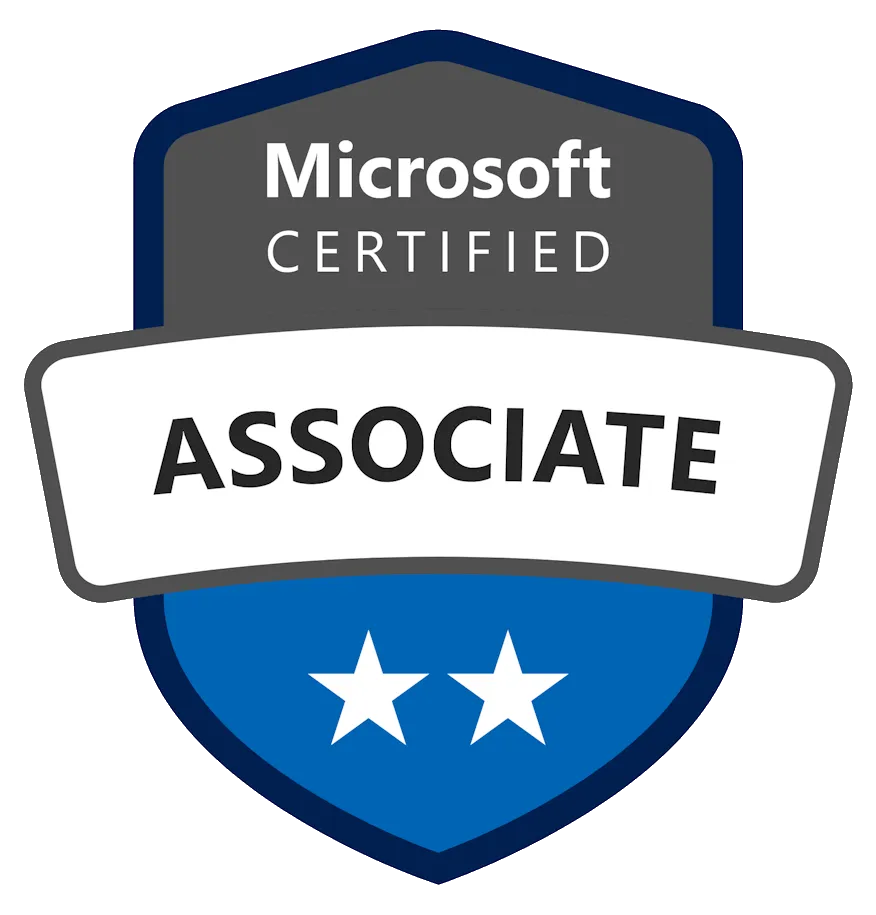Passed AI-102
I gained the 'Microsoft Certified: Azure AI Engineer Associate' certification, and learned a lot about the Azure AI suite of services in the process.
Another certification to add to my collection. Today I passed exam AI-102, which qualifies me for the certification Microsoft Certified: Azure AI Engineer Associate.

I had not had much experience with most of the Azure AI technology prior to this, so preparing for the certification became a great way to get more familiar with their different capabilities.
I prepared by using the following resources:
- Study guide for Exam AI-102: Designing and Implementing a Microsoft Azure AI Solution. Taking note that the exam was updated 30th April 2025. Many of the other resources predate this.
- Microsoft Learn Course AI-102T00-A: Develop AI solutions in Azure. Some content (especially the agent module labs) are already using the new Microsoft Agent Framework, whereas the exam is still covering Semantic Kernel and AutoGen. I’m guessing the next update to the exam will fix this.
- Pluralsight course Microsoft Certified: Azure AI Engineer Associate (AI-102). Most content is from 2024 or earlier.
- John Saville’s AI-102 Study Cram - Azure AI Engineer Associate Certification (July 2023)
- MeasureUp - Microsoft Practice Test AI-102: Designing and Implementing an Azure AI Solution. Not as useful as I thought it would be.
Most of the Microsoft labs use Python, but I know C# better than Python, so inspired by my colleague Kai, I worked through converting a few of the labs to the equivalent C# code. That was helpful in getting a perspective on all the various different SDKs (bot old and new). I’ll write more about that in a future post.
On the day
I ran the Pearson exam software OnVUE’s system test a couple of days before I was due to do the exam and I’m glad I did. There were some new issues it threw up which I was able to resolve in plenty of time. Here’s my list of things I did to ensure the app no longer detected any issues:
- Uninstall NDI Tools (removes virtual camera devices, which were confusing the application when it tried to find my webcam)
- Exit Slack and Microsoft Teams
- Exit PowerToys
- Disable Windows notifications (turn on ‘do not disturb’). This actually happened during my previous exam where a Windows notification popup appeared.
- Close any other applications in system tray
- Disable HyperV. OnVUE kept thinking I was running inside a VM (which I wasn’t). Disabling HyperV allowed me to continue.
You’re only allowed to have a single monitor in operation. I have a 3-monitor setup, but I knew from previous exams that I would need to disconnect two of the monitors and show the proctor via my webcam that they were disconnected. But this time they also said they needed to see the power cord also disconnected from the wall/powerboard!
Only problem was when I started pulling power cords, I accidentally powered off my dock which disconnected both the network and the webcam and microphone causing the OnVUE app to exit. A frantic couple of minutes getting the correct devices powered again and signing back into the exam and eventually I was cleared to start.
As you can see from the study guide above, the exam covers a lot of content. I did lean a bit on having access to Microsoft Learn. It is a time sink though (and the searching within Learn is not great). You definitely have to pace yourself to ensure you have enough time to get through all the questions in the time allowed.
I was happy to get to the end and finally see the summary page letting me know I’ve passed!